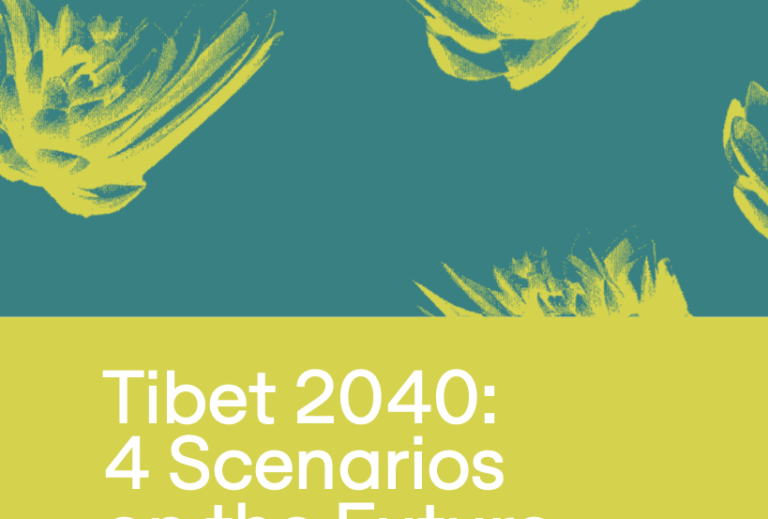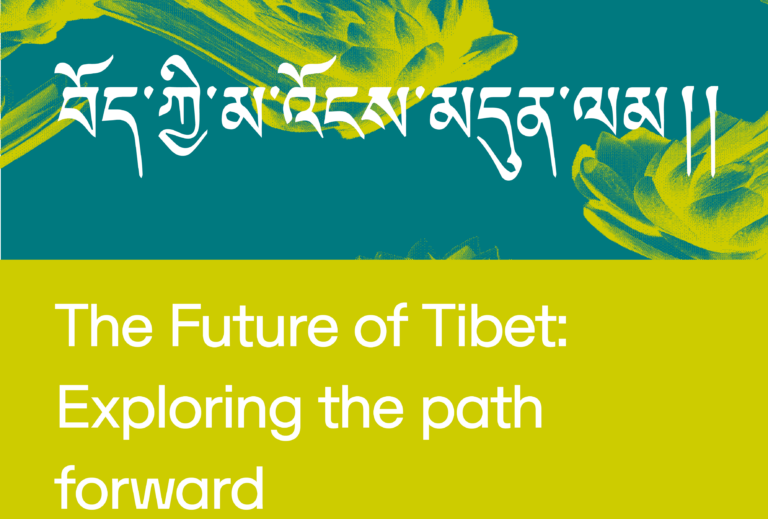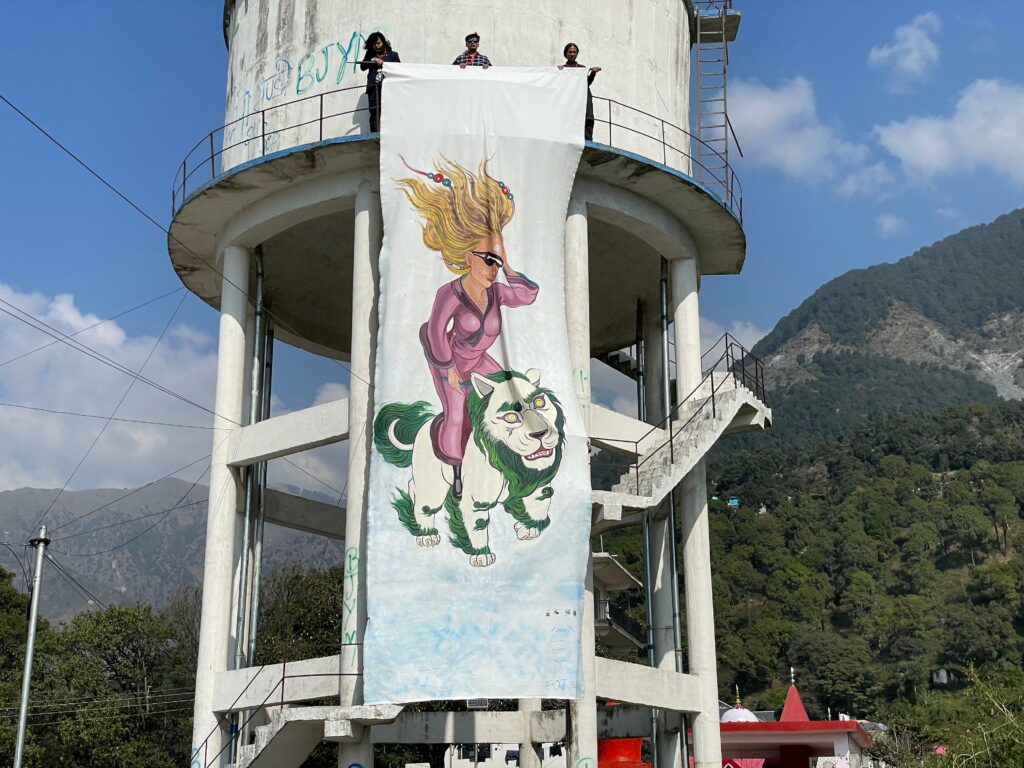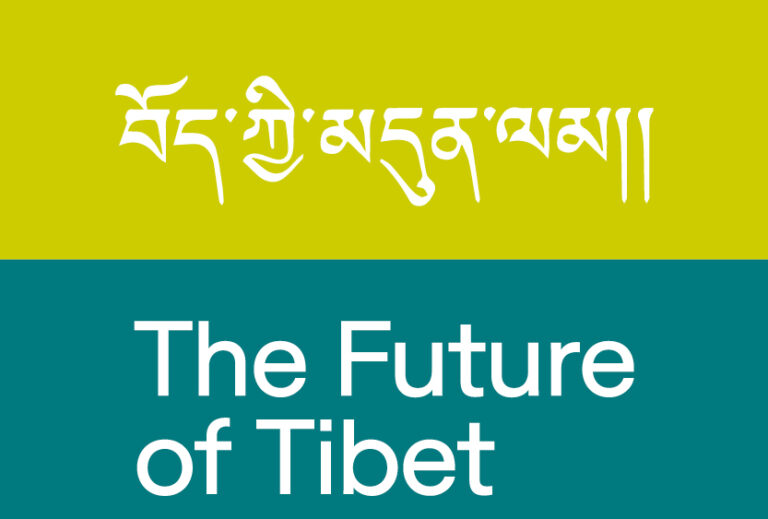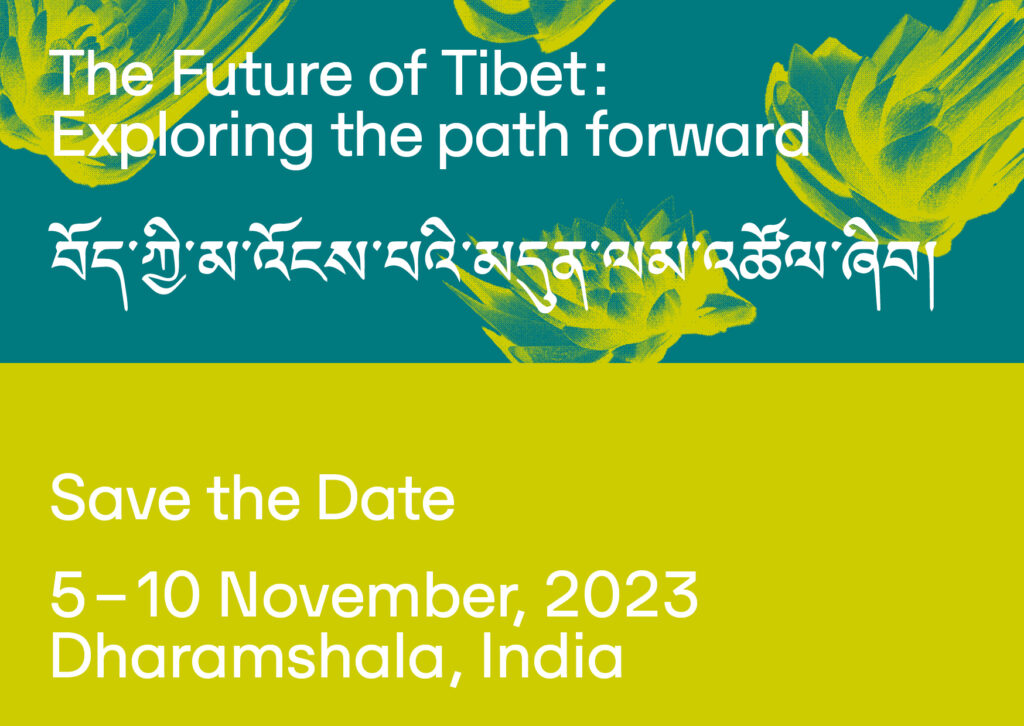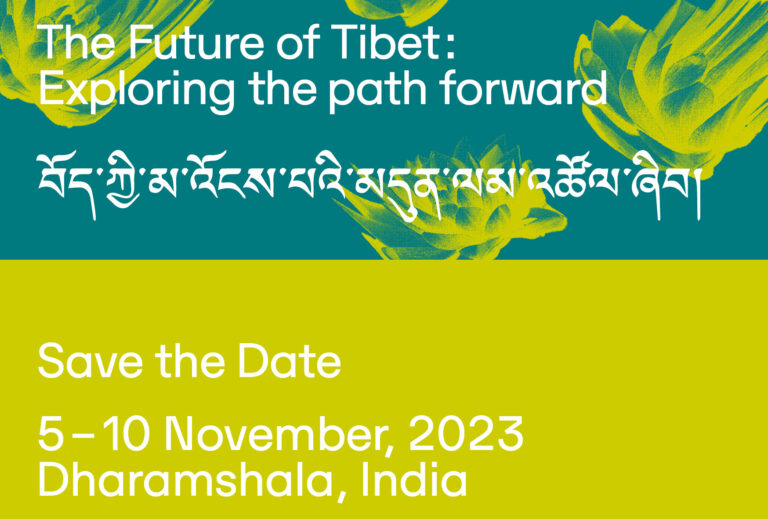In the snowy realm where our forebears’ legacy stands bold,
Where the guardian of Snow Land’s aspiration tenderly unfolds.
Beneath Avalokiteshvara’s serene and watchful gaze,
May Gangchenpa thrive in eternal grace.
Given the present conditions both inside and outside Tibet, coupled with the advancing age of His Holiness the Dalai Lama and the rapidly evolving global and Chinese political landscapes, it becomes evident that the Tibet issue has reached a critical juncture. It is imperative that we reflect on the past and contemplate the future. The time is ripe for us to take appropriate and effective measures to safeguard Tibetan identity, language, culture, and the future political landscape. With this in mind, a group of dedicated volunteers has urgently initiated the Future of Tibet Initiative. Since April 2022, we have organized four conferences in Washington DC, Paris, New York City, and New Delhi, engaging in discussions on a wide array of issues crucial to the future of Tibet.
The fifth conference took place at the seat of the Central Tibetan Administration in Dharamshala from November 5 to 10, 2023. His Eminence the 7th Ling Rinpoche and His Eminence the 13th Kundeling Tatsak Rinpoche graciously delivered speeches for the conference participants. Approximately 90 participants from seven different countries attended the conference. Throughout the conference, participants deliberated on the Tibet issue’s past, present, and future aspects and unanimously agreed on the following points:
Tibet boasts a rich history spanning several thousand years, establishing itself as one of Asia’s significant powers. Despite global historical transformations, Tibet has successfully maintained its sovereignty. In the early 20th century, British India and the Manchu-led Qing Dynasty sought to influence Tibet but were unsuccessful in their attempts. Even amidst the upheavals of two world wars, Tibet retained its status as a crucial source of major Asian rivers and a spiritual center.
In 1950, the Chinese Communist Party initiated its invasion of Tibet, culminating in the defeat of the Tibetan army in 1959, leading to His Holiness the Dalai Lama fleeing and seeking refuge in India. Despite the adversities, under His Holiness’s guidance, Tibetans successfully established the Tibetan government-in-exile as a continuation of the former independent Tibetan government. Guided by His Holiness’s vision, this government-in-exile embarked on a democratization process. Under His Holiness’s leadership, Tibetans also aspired to create a democratic future for Tibet, envisioning it as a zone of peace in Inner Asia. His Holiness played a pivotal role in internationalizing the peaceful struggle of the Tibetan people. Above all, His Holiness’s visionary leadership fostered a new generation equipped with both traditional and modern education, instilling strong hope for the future of Tibet.
Since 1959, the Communist Party of China has systematically invaded and subjugated the entire region of Tibet, leading to the systematic destruction of the Tibetan language, culture, and natural ecosystem. The Chinese government persists in violating the fundamental human rights of the Tibetan people. Under the current leadership of Xi Jinping, approximately 1 million Tibetan children have been forcibly enrolled in colonial-style boarding schools in Tibet. The erosion of Tibetan identity and culture has noticeably accelerated under Xi Jinping’s leadership.
During this conference, we, the participants, express our urgent appeal that is inherently connected to the future of Tibet:
1) His Holiness the Dalai Lama is the human manifestation of the protector deity of Tibet, Avalokiteshvara, and Tibetans are his disciples. This unique bond between the Dalai Lamas and the Tibetan people should last for eternity. Therefore, we strongly urge His Holiness the 14th Dalai Lama, to consider reincarnation.
2) During the interlude between the fourteenth Dalai Lama and his successor, the fifteenth Dalai Lama, the Chinese government will likely employ various strategies. We must be thoroughly prepared for these challenges. Therefore, it is imperative to establish an authoritative representative capable of addressing these uncertainties. Therefore, we strongly urge the establishment of a precise mechanism for appointing a representative during this period.
3) It is crucial for the collective future of Tibetans that the Tibetan struggle fosters a united and amicable environment where diverse perspectives from individuals with varied backgrounds and professions can thrive. As conference participants, we pledge to uphold this principle and urge all fellow Tibetans, united by the same heritage and lineage, to join us in embracing this approach.
4) To bolster the effectiveness and timeliness of our Tibet advocacy and leverage all available opportunities, it is crucial to closely monitor the swiftly evolving global geopolitical landscape, with a specific emphasis on China and India. Remaining vigilant, we must seize every opportunity that proves advantageous to the Tibetan cause.
5) The unbreakable connection between Tibetans inside Tibet and those in exile is indelible. Individuals in exile, from leaders to the common people, should empathize with their Tibetan counterparts’ challenges and aspirations. It is imperative to foster a tolerant atmosphere within our exile community. We must collectively identify a common adversary and refrain from any actions that might dishearten our fellow Tibetans inside Tibet.
6) The younger generations of Tibetans and those who have enjoyed a good education, particularly those living in Western countries, should enhance their efforts for the Tibetan cause. They should actively contribute to the successful passage of resolutions on Tibet in their respective nations and at the United Nations.
7) Until the Tibet issue is resolved, we must persist in our ongoing protest against the unlawful Chinese occupation of Tibet. In this endeavor, it is essential to form alliances with freedom fighters from other regions, including East Turkistan, Taiwan, and Hong Kong, to strengthen our collective protest. We should engage in additional protest and advocacy initiatives to amplify our voices and garner support for our cause.
Signed by all participants of the fourth Future of Tibet Conference
On Tibetan Water-Rabbit Year 2150
November 10, 2023
